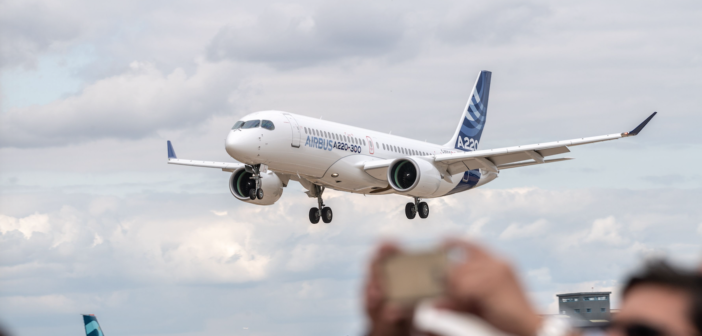The best Q3 for global aircraft orders since 2015

The third quarter of 2022 has seen a continuation to the strong order book of commercial aircraft seen throughout 2022. The three months saw 670 global aircraft orders placed, the highest Q3 figures since 2015 and a 43% increase year-to-date.
In line with post-pandemic recovery expectations, demand for single-aisle aircraft continues to dominate the market recovery, with 601 aircraft ordered, though in Q3, orders for wide-body aircraft increased by 60%, with 69 aircraft ordered.
Aircraft manufacturers delivered 252 aircraft in Q3 2022, which surpasses Q3 2021 deliveries by 19% and takes the total year-to-date aircraft deliveries to 765 aircraft. In Q3 2022, deliveries for single-aisle aircraft increased 13%, and wide-body aircraft by 55%. If a delivery average of 85 aircraft per month continues for the remainder of the year, 2022 deliveries could surpass the ADS forecast and reach 1,000 deliveries.
Flight data at the end of the quarter continues to show signs of recovery, with UK flight arrivals at a 16% reduction from comparable data at the end of September 2019. 2022 recovery has been on an upward trend since June, driven by key calendar events such as summer holidays and the easing of international travel restrictions.
The backlog of aircraft remains above 13,000 for the tenth consecutive month, rising with demand and market confidence with a 2% growth on Q3 2021 and represents many years’ worth of manufacturing worth a potential £217 billion to the UK aerospace sector.
We are seeing the best Q3 for aircraft orders since 2015 – a very welcome indication that long-term recovery from the impact of the Covid-19 pandemic continues at pace. In addition, the possibility of aircraft deliveries exceeding 1,000 aircraft for the first time since 2019 demonstrates our manufacturers are absorbing the recent production rate ramp-ups.
Nevertheless, the global operating environment remains tempestuous, with continuing supply chain issues and rising costs associated with raw materials and energy creating ongoing challenges for the sector.
